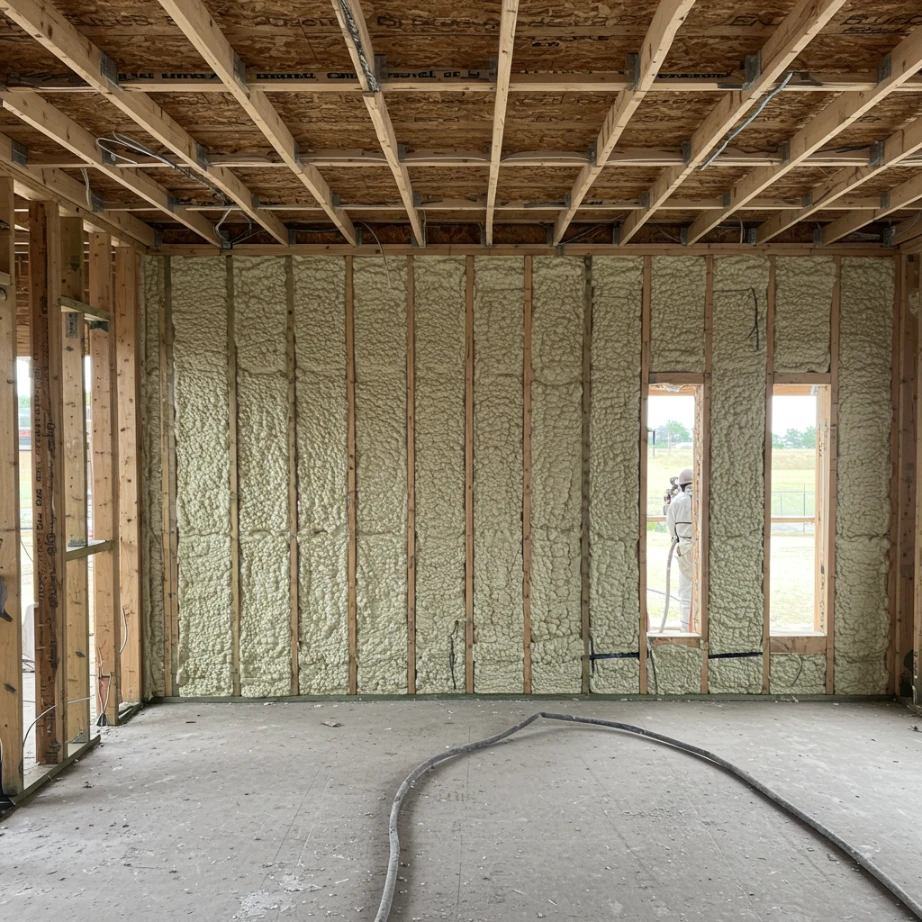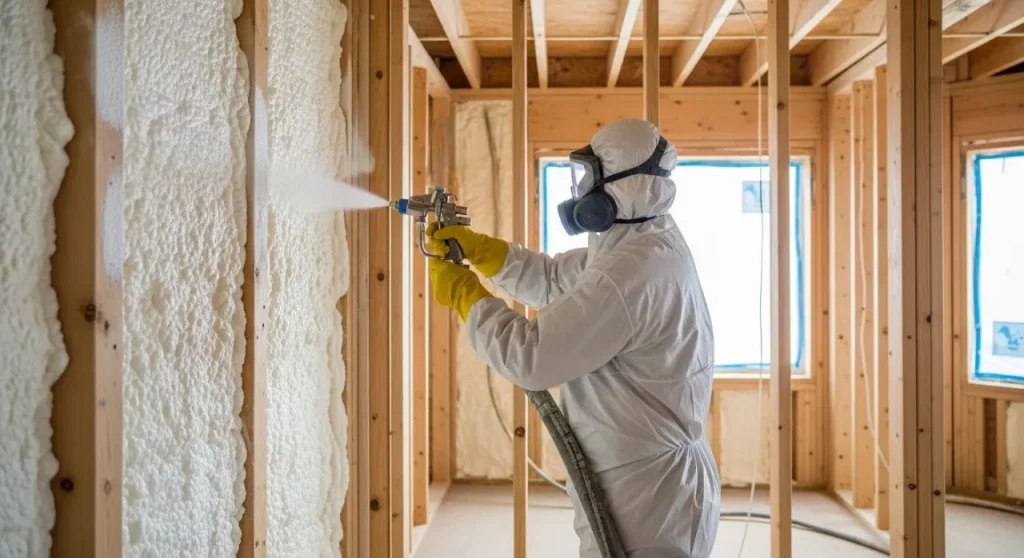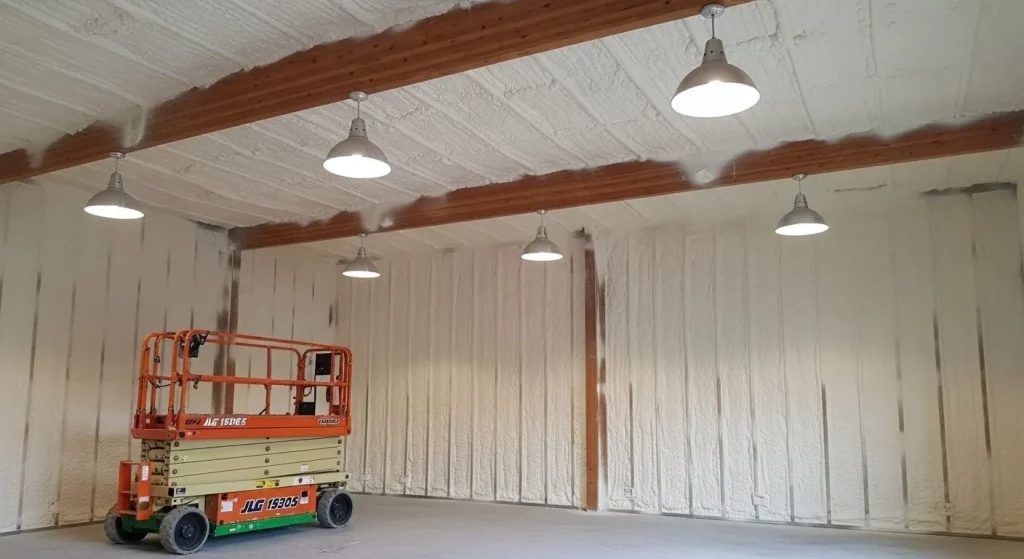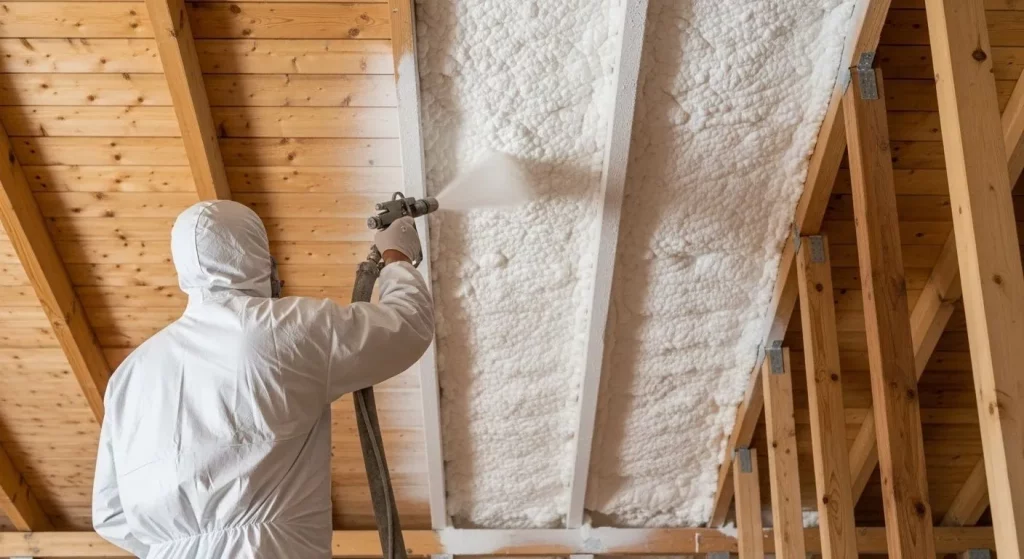Open-cell spray foam reduces outside noise by absorbing sound waves rather than blocking them. Its soft, porous structure is filled with millions of tiny air pockets that trap airborne sound, such as traffic or conversations, and convert the sound energy into a minute amount of heat. This process, known as sound absorption, significantly dampens noise transmission through walls, floors, and ceilings, creating a quieter indoor environment. This article will explain the mechanics of how this material works, its best applications, what to consider before installation, and answer some frequently asked questions.
With years of direct experience installing insulation for sound control, Raleigh Excel Spray Foam Insulation has seen how effective this solution can be. The information here is based on practical applications and an understanding of building science to help homeowners make informed decisions about managing noise in their living spaces.
The Science of Sound Absorption
To understand how open-cell spray foam works, it’s useful to distinguish between sound absorption and soundproofing. Soundproofing involves creating a barrier to stop sound from passing through a structure. Sound absorption, on the other hand, focuses on reducing the sound energy that is already within a space or passing through a material. Open-cell foam excels at absorption.
The material’s effectiveness is measured by a Noise Reduction Coefficient (NRC), which rates how much sound a material can absorb. An NRC of 0 indicates perfect reflection, while an NRC of 1.0 indicates perfect absorption. According to technical data from the Spray Polyurethane Foam Alliance, open-cell spray foam typically has an NRC rating of around 0.70, meaning it absorbs about 70% of the sound it contacts. The non-rigid, sponge-like composition of the foam is what makes this possible. When sound waves hit the foam, they become trapped in the interconnected cells and quickly lose energy.
Bonus Tip: For even better results, consider using open-cell foam in combination with mass-loaded vinyl or an extra layer of drywall. The foam absorbs the sound, while the dense materials help block any remaining noise from passing through.
Open-Cell vs Closed-Cell Foam for Noise Control
Not all spray foams are created equal when it comes to acoustics. The choice between open-cell and closed-cell foam depends entirely on the specific goal. For sound dampening, open-cell is almost always the superior choice due to its physical structure.
Closed-cell foam is rigid and dense. While it offers excellent thermal insulation and acts as a vapor barrier, its structure reflects sound waves more than it absorbs them. It is more effective at reducing structural vibrations and low-frequency noise but does little to manage airborne sounds like voices or music.
Here’s a direct comparison of their acoustic properties:
| Feature | Open-Cell Spray Foam | Closed-Cell Spray Foam |
|---|---|---|
| Cell Structure | Interconnected, porous cells | Independent, sealed cells |
| Density | Low (approx. 0.5 lb/ft³) | High (approx. 2.0 lb/ft³) |
| Primary Acoustic Function | Sound Absorption | Vibration Dampening |
| Typical NRC Rating | ~0.70 | ~0.30 |
| Best For | Airborne noise (traffic, voices) | Low-frequency structural noise |
| Flexibility | Soft and flexible | Rigid and strong |
The data shows a clear advantage for open-cell foam in applications where the main objective is to reduce common neighborhood sounds.
Practical Applications for Quieter Homes
The versatility of open-cell spray foam allows it to be used in several key areas of a home to create a more peaceful atmosphere. With urban noise pollution becoming a more significant concern, strategic insulation is a practical solution. The U.S. Environmental Protection Agency has long recognized the health effects of noise, making sound control an important part of a healthy home environment.
Effective application spots include:
- Exterior Walls: This is the first line of defense against outside noise. Applying foam in exterior wall cavities can muffle the sounds of traffic, lawn equipment, and nearby conversations.
- Media Rooms and Home Offices: To prevent sound from traveling to other parts of the house, insulating the interior walls and ceiling of these rooms is highly effective.
- Bedrooms and Nurseries: Insulating the walls of sleeping areas can help create a quiet sanctuary, undisturbed by household activities or outside disturbances.
- Between Floors: Applying open-cell foam in the floor joist cavities can significantly reduce the sound of footsteps and conversations traveling between stories.
Bonus Tip: When insulating between floors, pay special attention to sealing gaps around plumbing pipes, ductwork, and electrical wiring. These small openings can act as channels for sound, undermining the effectiveness of the insulation.
Things to Consider Before Making a Decision
Before committing to open-cell spray foam for sound control, there are several factors to evaluate to ensure it’s the right choice for your specific situation.
- Project Type (New vs. Retrofit): Installing spray foam is simplest during new construction when wall cavities are open. Retrofitting it into existing walls requires a different approach, often involving drilling small holes and injecting the foam. This “drill-and-fill” method is effective but can be more complex and costly.
- The Nature of the Noise: Identify the primary type of noise you are dealing with. Open-cell foam is excellent for airborne sounds. If your problem is impact noise, like a bouncing ball on the floor above, you may need to combine the foam with other solutions like resilient channels or acoustic underlayment.
- Ventilation and Air Sealing: Open-cell spray foam creates an effective air seal, which is great for energy efficiency but also means your home’s ventilation needs might change. Proper ventilation is necessary to maintain healthy indoor air quality. A review of your home’s HVAC system might be needed.
- Local Building Codes: Insulation projects must comply with local regulations. According to the International Code Council, codes often specify requirements for thermal performance (R-value) and fire safety. Open-cell foam must be covered by an approved thermal barrier, like drywall, in most applications.
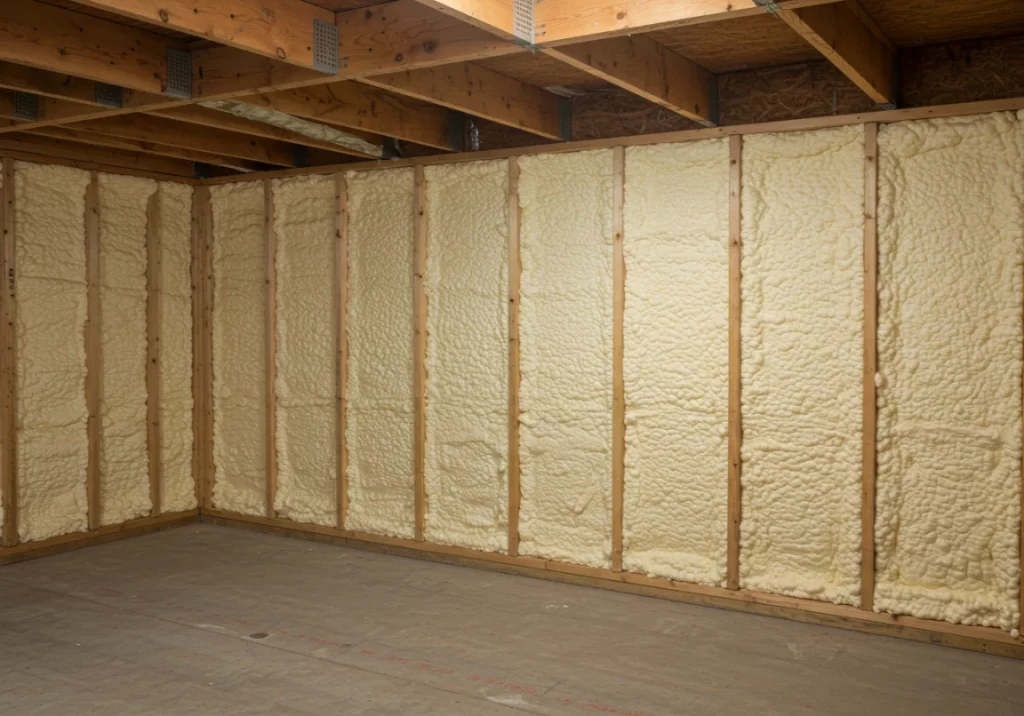
Final Thoughts
Open-cell spray foam is a highly effective tool for reducing unwanted noise from busy neighborhoods. Its ability to absorb airborne sound makes it an ideal choice for insulating walls, ceilings, and floors, leading to a quieter and more comfortable home. By understanding its properties and applying it strategically, homeowners can significantly improve their indoor acoustic environment. Before starting any project, evaluate the specific noise issues you face and consider how spray foam fits into a complete sound management strategy.
Get a Professional Assessment
To determine the best approach for your home’s unique sound control needs, a professional evaluation is recommended. The team at Raleigh Excel Spray Foam Insulation can provide a detailed assessment and explain your options. Contact the office at (919) 301-9435 or reach out via email at [email protected] to discuss your project.
Sources
- U.S. Environmental Protection Agency (EPA) – Provides information on the Clean Air Act and the health impacts of noise pollution.
- International Code Council (ICC) – Offers access to the International Building Code (IBC), which sets standards for construction, including insulation and fire safety requirements.
Frequently Asked Questions
Does the thickness of the foam application matter?
Yes, thickness directly impacts performance. A standard application in a 2×4 wall (3.5 inches) is usually sufficient for noticeable sound reduction. For areas needing higher performance, like a home theater, applying it in a 2×6 wall (5.5 inches) provides even better absorption.
Can open-cell foam completely soundproof a room?
No material can achieve 100% soundproofing. Open-cell foam is a sound absorption material, not a sound-blocking barrier. It dramatically reduces noise levels but works best as part of a system that may include denser materials and sealing air gaps.
What is the difference between NRC and STC?
Noise Reduction Coefficient (NRC) measures a material’s ability to absorb sound, which is where open-cell foam excels. Sound Transmission Class (STC) measures how well a whole wall assembly blocks sound from passing through. An assembly with open-cell foam will have a higher STC rating than an uninsulated wall.
Can I install open-cell spray foam myself?
Spray foam installation is not a DIY project. It requires specialized equipment to handle the chemical reaction and application process correctly. Professionals are trained to manage temperature, pressure, and mixing ratios to ensure the foam cures properly and safely.
How does open-cell foam compare to mineral wool for sound?
Both are excellent sound absorbers. Mineral wool is denser and sometimes offers slightly better performance with low-frequency sounds. However, spray foam’s advantage is its ability to expand and seal every crack and crevice, creating a complete air barrier that prevents sound from flanking around the insulation.
Will spray foam help with low-frequency bass sounds from a neighbor?
Low-frequency sounds are challenging to manage as they travel through a building’s structure. While open-cell foam will help absorb some of this energy, it won’t eliminate it. Combating heavy bass often requires decoupling techniques, such as creating a “room within a room” with resilient channels and multiple layers of drywall.




